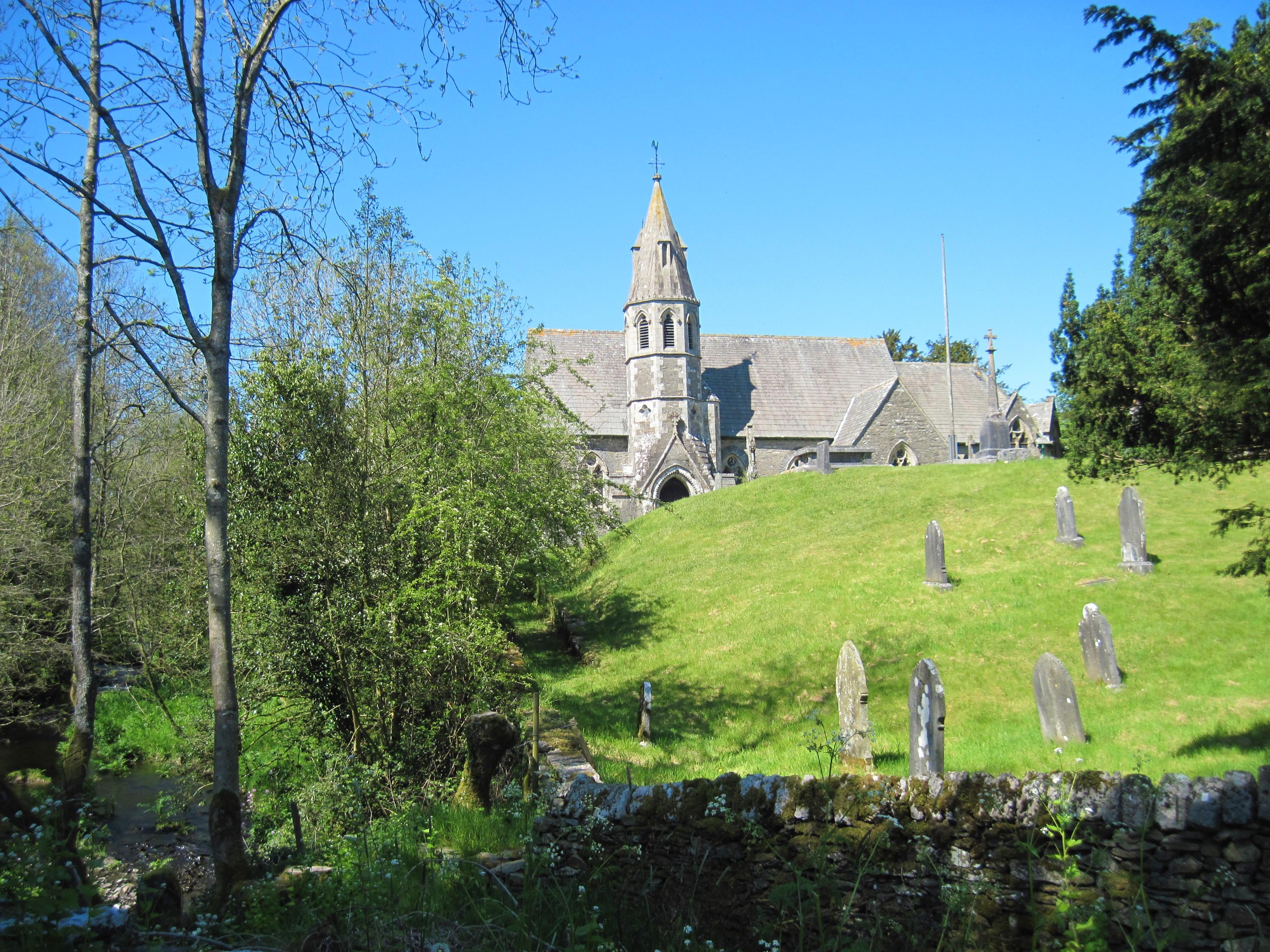St Kentigern
Crosthwaite, Cumbria
Founded in AD 553, we are an evangelical Anglican church and welcome people of all traditions or none.

The church lies in a quiet location amidst fields and woodland on the edge of the small Lakeland village of Underbarrow.
Underbarrow, Cumbria
A distinctive feature is the octagonal tower and spire on the south side, described by Pevsner as a naughty design. The interior, recently reordered and warmly carpeted, is light and spacious with clear glazing in the nave and stained glass in the chancel. Font, pulpit and other furniture are finely fashioned in wood.
The present Grade II listed building was constructed in 1869 in Early English style, on the site of three earlier chapels. Until 1929, Underbarrow was a chapel of ease based on Kendal parish church; All Saint’s is now the parish church of Underbarrow with Helsington.
The church was built in stone to a cruciform design, with a south entrance porch surmounted by an unusual octagonal tower with a spire, containing a single bell. The interior has a nave without aisles, an aspidel chancel and north and south transepts. The organ occupies the south transept and reordering in 2016/17 created a toilet and kitchen in the north; the church was made more spacious by removing pews from front and rear of the nave. Unusually, the octagonal font near the door is of wood, compare the ebony columns and carving with those of the communion rail. Notice too the angel carved on the pillar beside the pulpit, holding a tablet inscribed ‘God is Love’, perhaps as a cue to preachers. The angel on the opposite side of the chancel arch offers us the instruction ‘Worship Thou Him’.
You cannot fail to notice the three stained glass windows at the east end. The central window (installed 1869) portrays Jesus in scenes from the Gospels: appropriately for Underbarrow, sheep feature strongly. The right window (1907) shows Jesus with the little children. Perhaps most memorable is the left window (1955), depicting Jesus, Mary and Joseph in the carpenter’s shop. The saw looks very modern.
On a mound in the south graveyard stands the memorial to the seven men of Underbarrow who died in the First World War. A path round the east end of the church leads to the north graveyard extension, from which there are enticing views of the surrounding countryside. A pedestrian gate gives access to Chapel Lane and to fine walks on the network of bridleways and footpaths to the north and east. Half a mile along the road to the southwest is the Black Labrador inn, noted for good food and refreshments.
Crosthwaite, Cumbria
Founded in AD 553, we are an evangelical Anglican church and welcome people of all traditions or none.
Helsington, Cumbria
Built in 1726, the church commands extensive views across the Lyth valley towards the distant Lakeland fells and Morecambe Bay.
Kendal, Cumbria
With a history dating back over a thousand years, one of the largest parish churches in the country and one of England's Greater Churches.